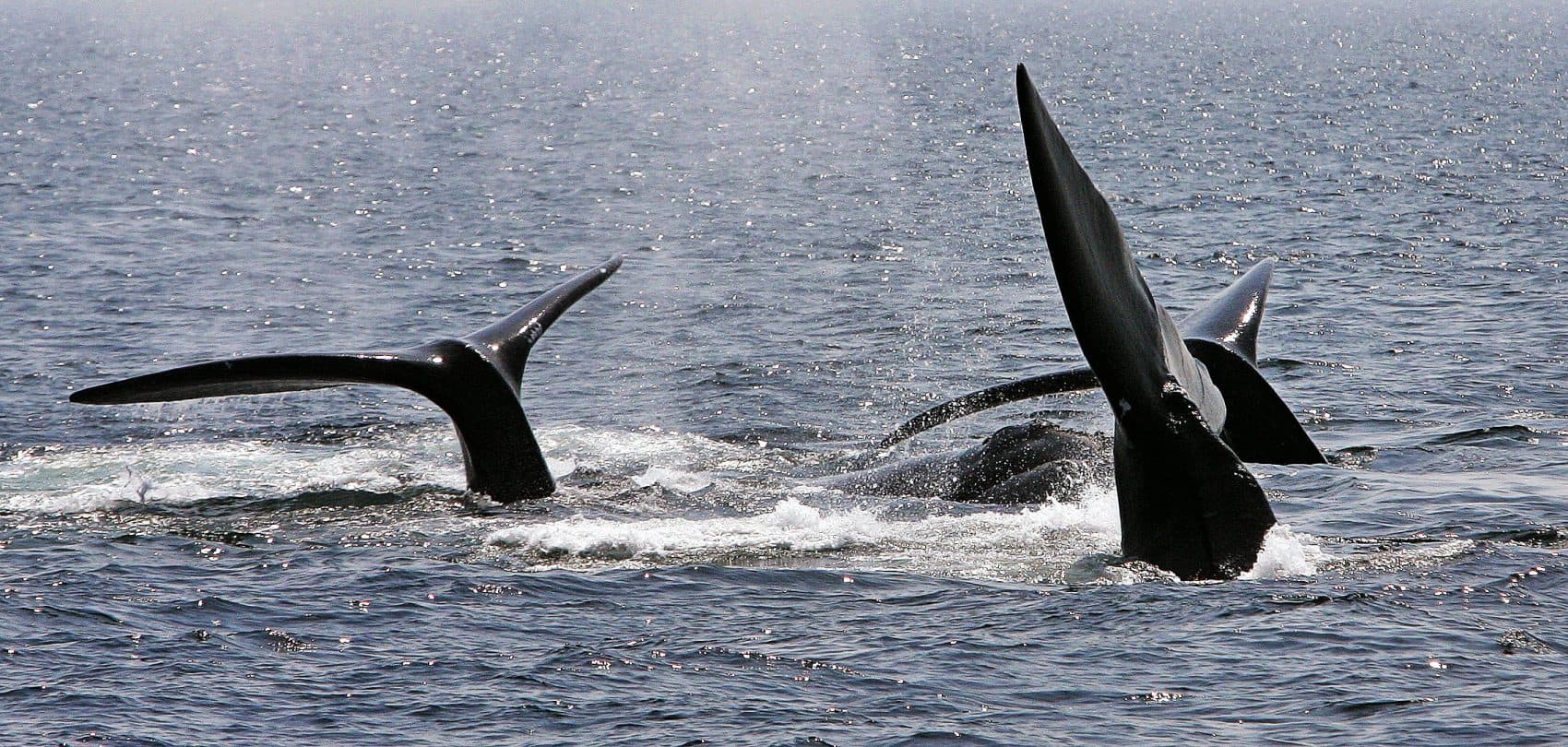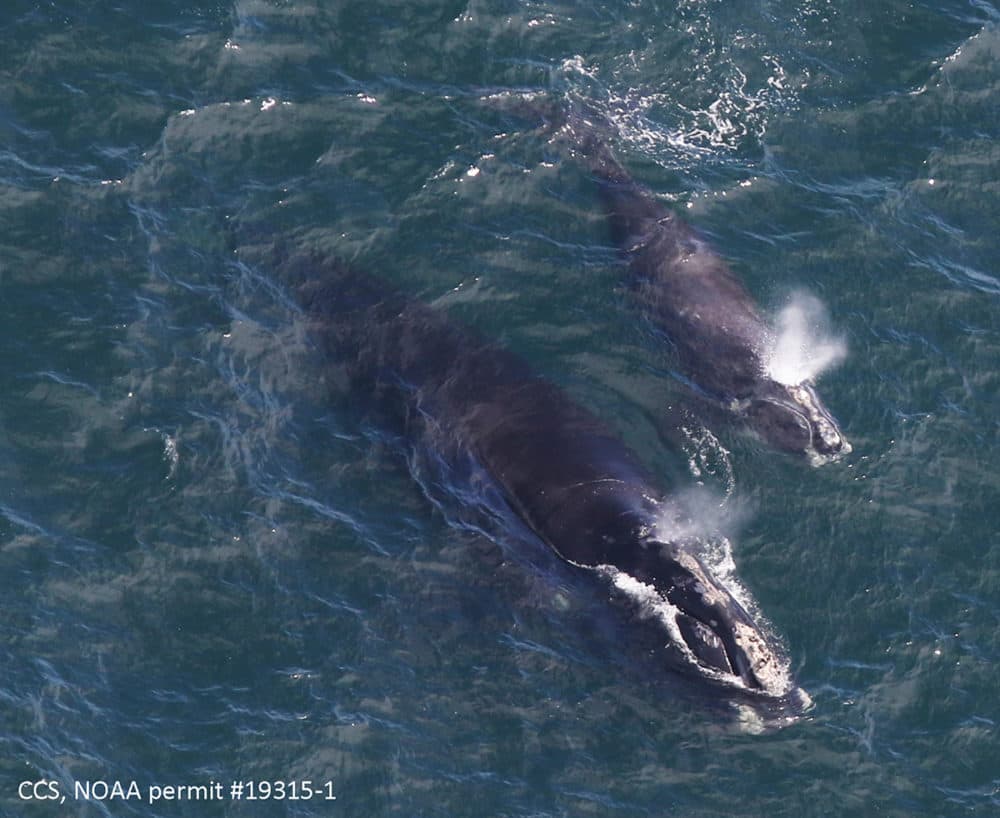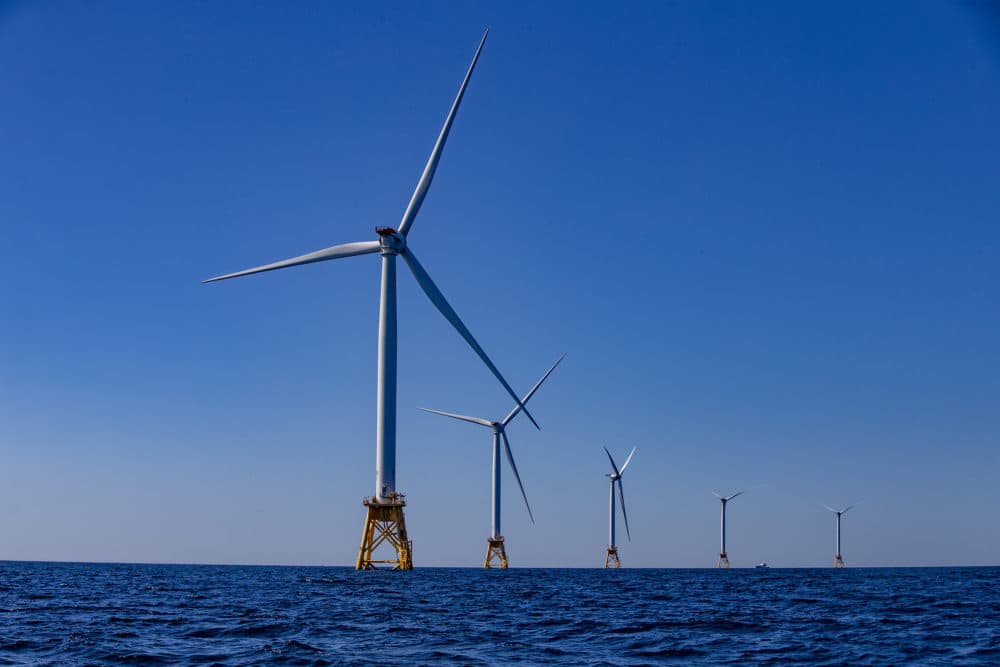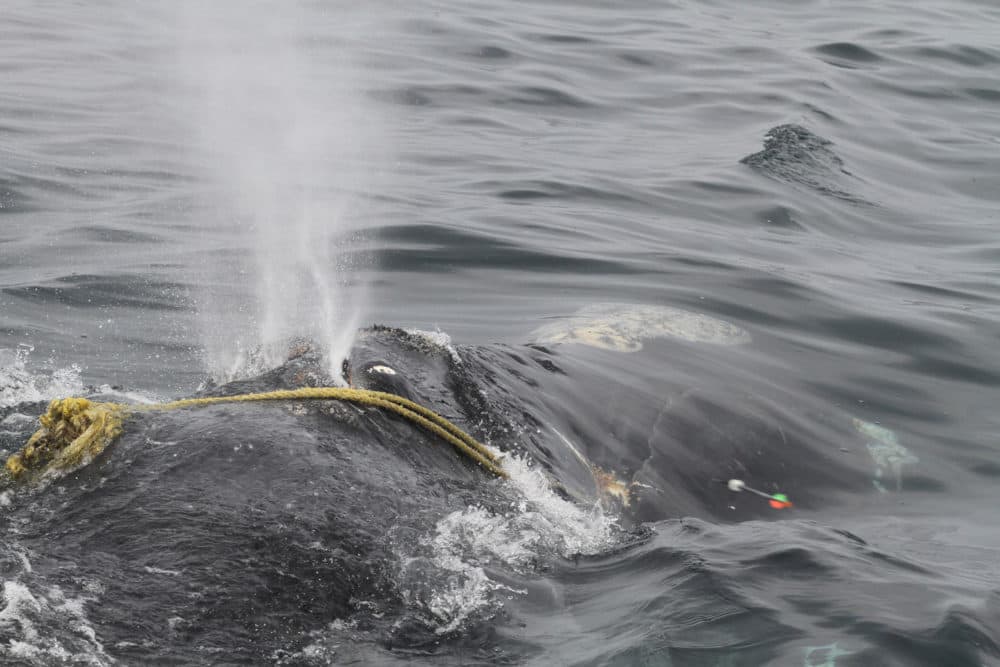Advertisement
The state of the whales: 4 takeaways from this year's Right Whale Consortium meeting

The annual meeting of the North Atlantic Right Whale consortium started with a gut punch: there are now only about 336 North Atlantic right whales left in the world, the lowest number in nearly 20 years.
And not many people know about it: A Pew survey released in April found that only 29% of people living along the east coast had ever heard of the North Atlantic right whale.
The two-day meeting gathered researchers, industry representatives, government officials and conservation managers to share updates on regulations, research, and efforts to educate the public. The goal: to reduce the dramatic decline in the whale population.
Here are our top takeaways from that meeting.
The state of the whales is not good.
Data released before the meeting finds the right whale population dropped 8% between 2019 and 2020. Fewer than 100 of those whales are believed to be breeding females.
“The trend is very clear and disturbing,” said Philip Hamilton, senior scientist at the Anderson Cabot Center for Ocean Life at the New England Aquarium. “We know what the issues are and we’ve known for a long time, and there are managers in both [the U.S. and Canada] that have made steps in the right direction, but clearly by this decrease in numbers, it hasn’t been good enough.”

Hamilton and other attendees stressed that the whales are not a lost cause — at least not yet. North Atlantic right whales have recovered from the brink of extinction more than once. So far this year, the consortium has documented 2 deaths, and 18 new calves.
“We know they can recover,” said Hamilton. “We just have to stop injuring and killing them, and they will do their part.”
There are rules in place to protect the whales, but they're not working.
The primary causes of death for the whales are ship strikes and entanglement in fishing gear. In response, state and federal regulators have issued seasonal gear closures for fishermen and extended mandatory and voluntary slow zones for ships, with mixed success.
Consortium members reviewed data on the rules' results, but don't have the authority to issue official recommendations beyond the overall need to reverse the population decline.
The meeting can still spark change, though, said Heather Pettis, executive administrator of the consortium. Government and regulatory officials can bring new information back to their organizations, which can then issue new protections or change existing ones.
Other scientists expressed more skepticism.
“I would hope all the people involved...are getting better information, a better understanding of the issue,” said Hamilton. “I don’t actually expect a marked change to happen from this meeting alone. It’s a much bigger issue.”
Advertisement
Whales and offshore wind are a big question mark.
Vineyard Wind is building the first commercial-scale offshore wind farm in the country. But this planned wind farm, and several more lease areas, sit in an area frequented by the North Atlantic right whale. The area was originally considered a migration corridor, but over the past 10 years researchers have seen increases in whales feeding and in some cases, socializing in those waters.
“One of the challenges [to the whales] is climate change and offshore wind is a solution to climate change,” said Jessica Redfern, chair of the EcoMap program at the New England Aquarium. “There's a lot of us who really believe in the importance of offshore wind. We just want to make sure that it’s done in the most sustainable manner...in a way that minimizes its impacts to wildlife.”

That’s a difficult balance to strike. North Atlantic right whales used to come to the area at certain times of the year. That's why in 2019 Vineyard Wind agreed to time its construction for when whales were unlikely to be in the area.
But a study published earlier this year by National Oceanic and Atmospheric Administration (NOAA) Fisheries and the New England Aquarium showed the whales are now showing up in southern New England waters, including the wind lease areas, year round.
That’s particularly concerning during the construction period. Redfern said the disruption could cause whales to leave the area, change their behavior or endure increased stress. Human noise pollution in the ocean is already growing, making it harder for certain animals, including whales, to communicate.
A group of Nantucket residents cited concerns for the whales when they filed a federal lawsuit in late August to block the construction of Vineyard Wind. However, during the approval process for the project, the Bureau of Ocean Energy Management and other federal agencies determined noise from pile driving during construction would only cause temporary issues for about 20 whales.
Researchers hope that existing and new data can create a set of best standards for the development of Vineyard Wind, which can then be applied to other wind farms planned along the east coast. The Biden administration has set a goal of deploying 30,000 megawatts of offshore wind by 2030.
Still on the table: weak rope and vessel speed rules (and maybe ropeless fishing).
Right now, NOAA issues mandatory and voluntary slow zones for ships 65 feet long or larger. The mandatory zones are seasonal, and require ships to slow down to 10 knots, or about 11.5 miles per hour; the voluntary zones are triggered when a whale is seen.
A review found poor compliance in the voluntary slow zones, and also found some whales being killed by boats too small to trigger the speed zones. NOAA is considering changes to the current rules, and is expected to release a draft of proposed changes next spring.

Researchers are also looking at new types of fishing gear, specifically rope. One is weak rope, which is designed to break at a certain level of force. Massachusetts made the use of weak rope mandatory this year. The state also issued more seasonal fishing closures.
Another approach is ropeless fishing, which some consider the silver bullet to prevent entanglements. The system removes buoys and vertical ropes; instead fishermen would use app-based systems to trigger an inflatable balloon installed in their traps, bringing it to the surface.
Ropeless fishing technology exists, but it's expensive and needs more testing. But the public likes the idea of a technological fix: the same Pew survey found that 89% of respondents want fishermen to use gear that does not harm whales, if the gear is subsidized by the government.
This segment aired on October 29, 2021.
